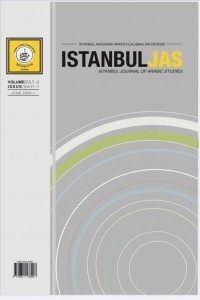الإطارُ المَرجعيُّ لِلكَفاءَةِ اللُّغويّة لحِلْفِ شَمالِ الأَطلَسِيّ - عَرضٌ وتَحليلٌ
إطار مرجعي، الكفاءة اللغوية، مستويات، مقياس، الناتو
NATO STANAG 6001 Language Proficiency Framework Review and Analysis
Framework, Language Proficiency, Levels, Scale NATO,
___
- BILC, NATO STANAG 6001 LEVEL 4 LANGUAGE PROFICIENCY A Conceptual Model and Implications for Testing, (BILC Working Group on Level 4 Proficiency, 2013), https://www.natobilc.org/documents/LanguageTesting/STANAG%20Level%204%20Framework%20-%20April%202013%20(full).pdf (Retrieved: 15 October 2019)
- BLIC, “About us”, https://www.natobilc.org/en/info/about-us/ (Retrieved: 15 October 2019)
- BLIC, “Stanag-6001”, https://www.natobilc.org/en/products/stanag-60011142_stanag-6001/ (Retrieved: 15 October 2019)
- COUNCIL OF EUROPE, Common European Framework of Reference for Languages: Learning, Teaching, Assessment. Companion Volume with New Descriptors, (Strasbourg: Language Policy Programme, 2018) https://rm.coe.int/cefr-companion-volume-with-new-descriptors-2018/1680787989 (Retrieved: 10 October 2019)
- Ekrem Solak, Historical Development of Nato Stanag 6001 Language Standards and Common European Framework (Cef) and The Comparison of Their Current Status. Gümüşhane Üniversitesi Sosyal Bilimler Enstitüsü Elektronik Dergisi, 2/3 (2011), pp35-46
- Glenn Fulcher and Fred Davidson, Language testing and assessment: An advanced resource book. (New York: Routledge, 2007)
- Julie J. Dubeau, “Are we all on the same page? An exploratory study of OPI ratings across NATO countries using the NATO STANAG 6001 Scale” (Master Diss), Carleton University, 2006
- Marioara Pateşan and Dana Zechia. Foreign Language Education in the Military, International conference KNOWLEDGE-BASED ORGANIZATION, Vol. 24. No. 2, Sciendo, 2018
- Martha Herzog, An overview of the history of the ILR Language proficiency skill level descriptions and scale. Interagency Language Roundtable. http://www.govtilr.org/Skills/IRL%20Scale%20History.htm (Retrieved: 15 October 2019)
- NATO, “WHAT IS NATO?”, https://www.nato.int/nato-welcome/index.html (Retrieved: 15 October 2019)
- NATO. Nato StandardATrain P-5 Language Proficiency Levels. ed a, v2. (Nato Standardization Office NSO, 2016 (https://www.natobilc.org/files/ATrainP-5%20EDA%20V2%20E.pdf (Retrieved: 20 October 2019)
- Ray Clifford, 50Years of BILC: The Evolution of STANAG 6001 1976 – 2016 and the first Benchmark Advisory Test, (2016) presentation, https://www.natobilc.org/documents/Conferences/2016/day%202/STANAG%206001%20&%20BAT,%20Clifford.pptx (Retrieved: 15 October 2019)
- ISSN: 2651-5385
- Yayın Aralığı: Yılda 2 Sayı
- Başlangıç: 2018
- Yayıncı: İbrahim ŞABAN
في سيكولوجية القصيدة المغربية المعاصرة
Yetişkin Öğrencilerin Arap Alfabesinin Öğrenimine ve Sesletimine Dair Kaygıları
من غرناطة إلى إسطنبول: دراسة في رحلة بيت بني داود البلوي
الإطارُ المَرجعيُّ لِلكَفاءَةِ اللُّغويّة لحِلْفِ شَمالِ الأَطلَسِيّ - عَرضٌ وتَحليلٌ
"WEKA التصنيف الآلي للبيانات النصية العربية باستخدام البرامج الحاسوبية "برنامج
Türk – Arap İlişkileri Eski Eyaletler Yeni Komşulara Dönüşürken (1914-1923)
